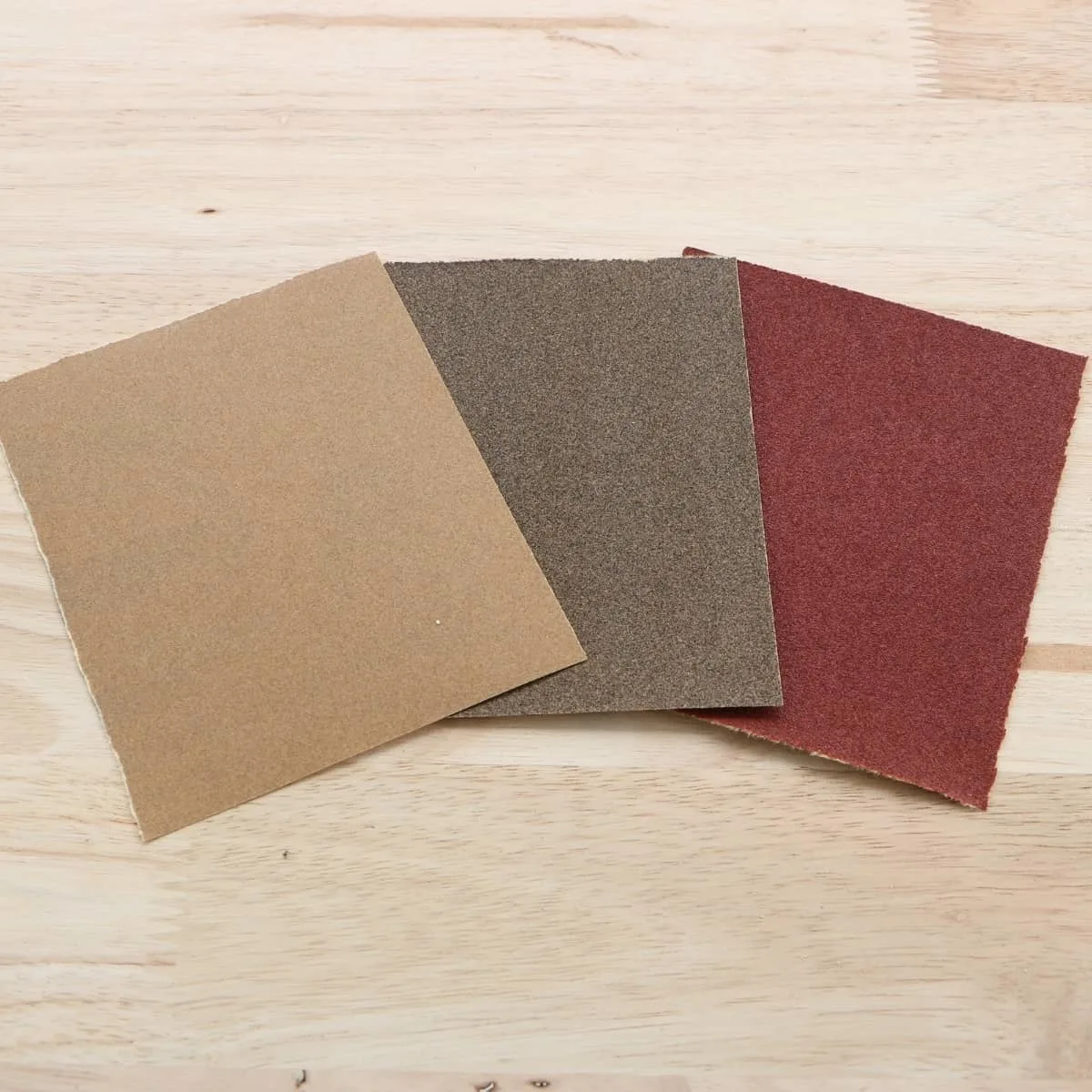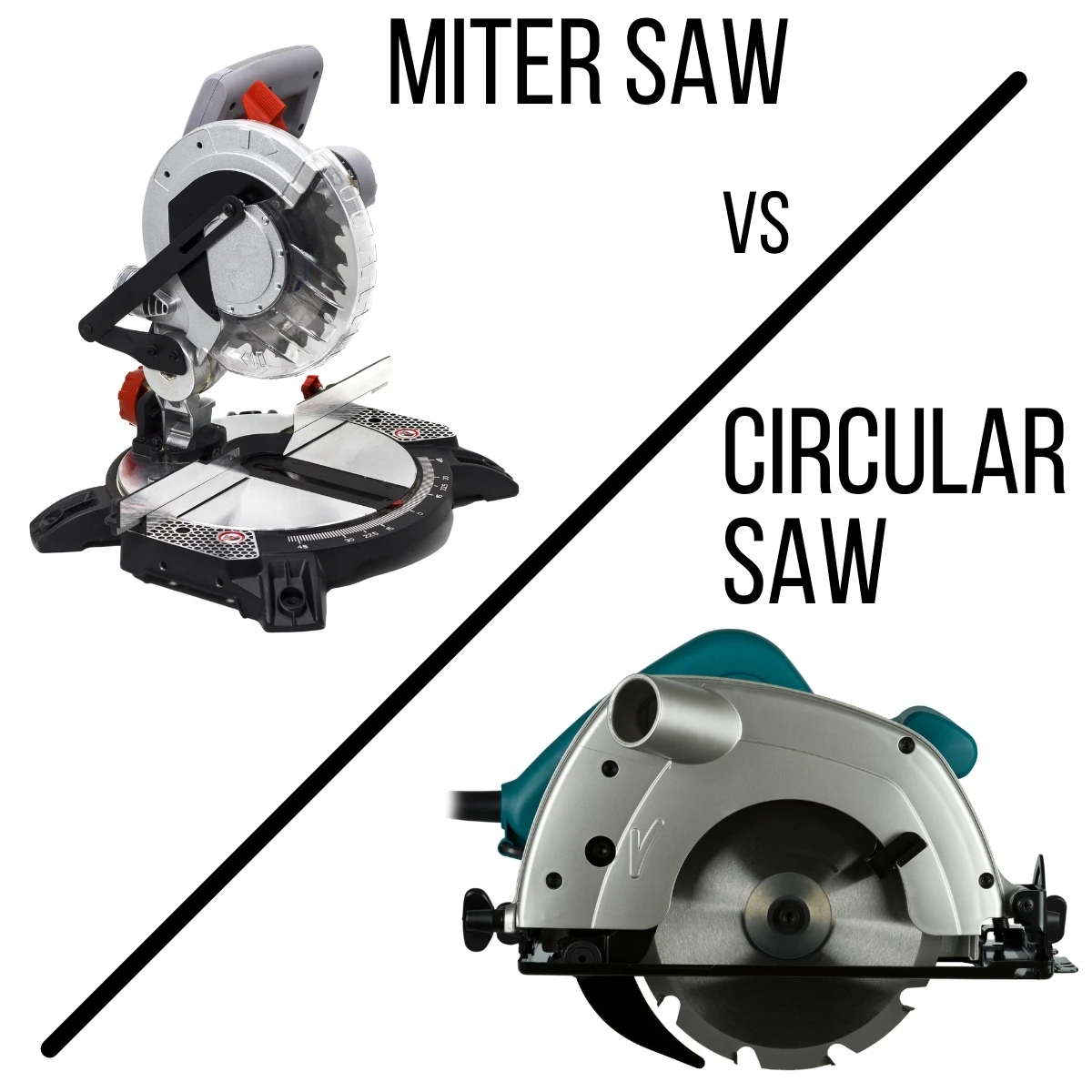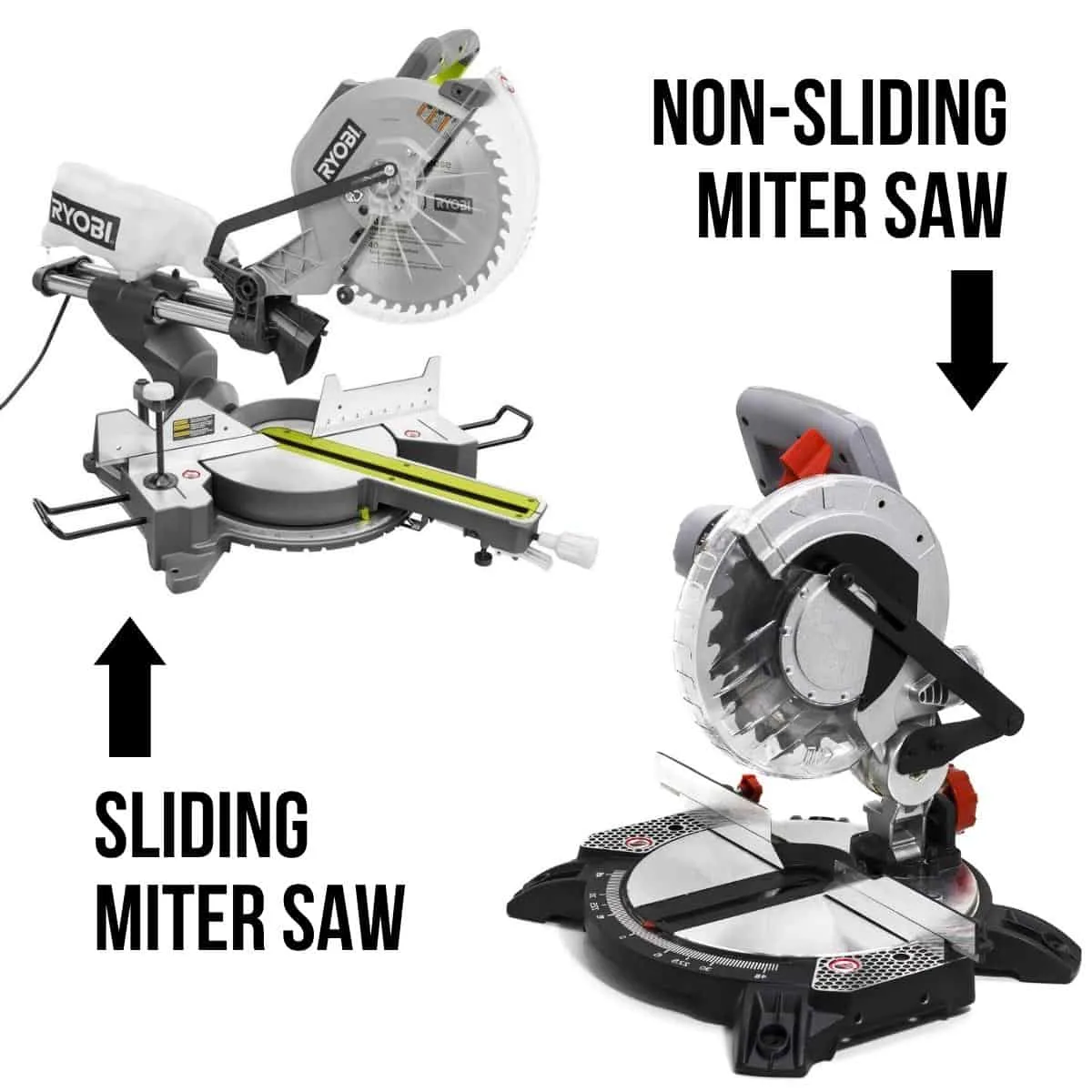What's the difference between a single bevel and a double bevel miter saw? Find out which one is right for you in this article!
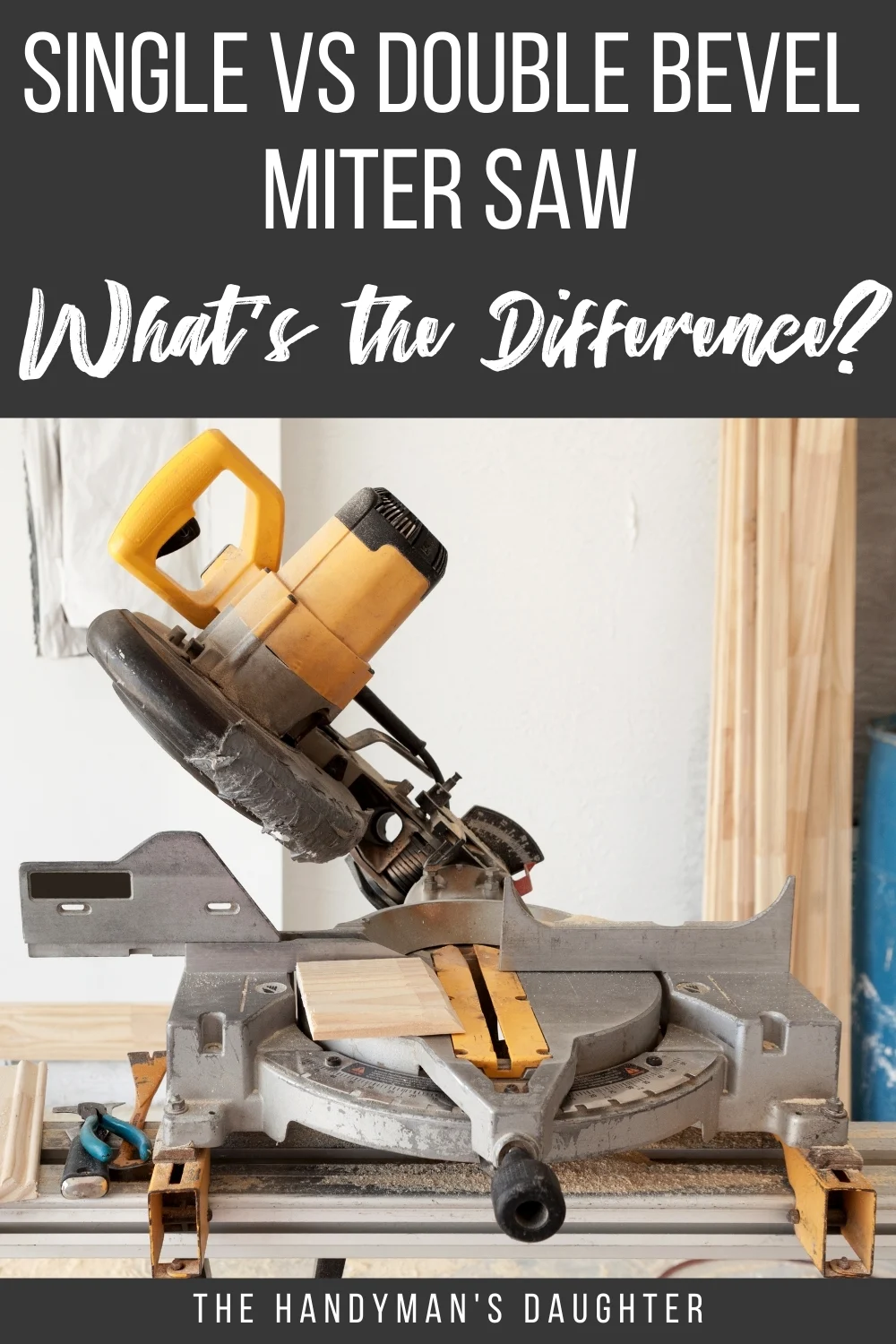
Ever wonder what's the difference between a single bevel and a double bevel miter saw? Is it worth spending the extra money for just one type of cut? In this article, I'll explain what each type of saw does, and help you determine if your project requires this special feature.
This post contains affiliate links for your convenience. Purchases made through these links may earn me a small commission at no additional cost to you. Please visit my disclosures page for more information.
What is a bevel cut?
Let's start with the basics. A bevel cut often gets confused with a miter cut, so hopefully this section will help! If you've never used a miter saw before, consider reading my beginner's guide to the miter saw first.
All miter saws can make a mitered cut (hence the name). This is achieved by swiveling the platform that the wood sits on. Most miter saws can cut at least a 45 degree miter, and many can cut even wider angles.
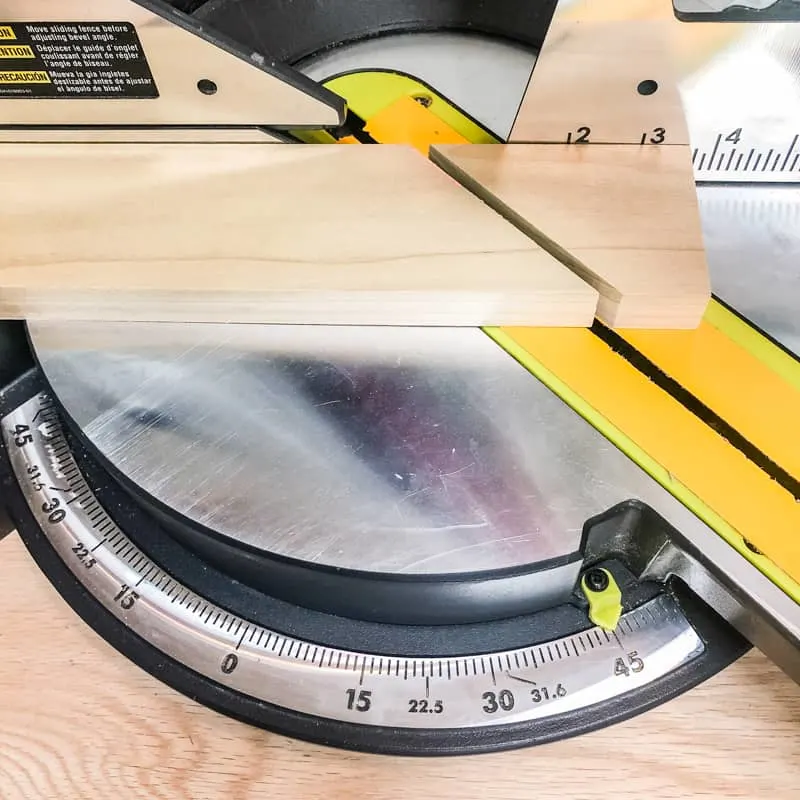
A bevel, on the other hand, is a more specialized cut that not all miter saws can perform. It involves adjusting the angle of the motor and blade by tilting it to the side. You can see the resulting beveled cut below.
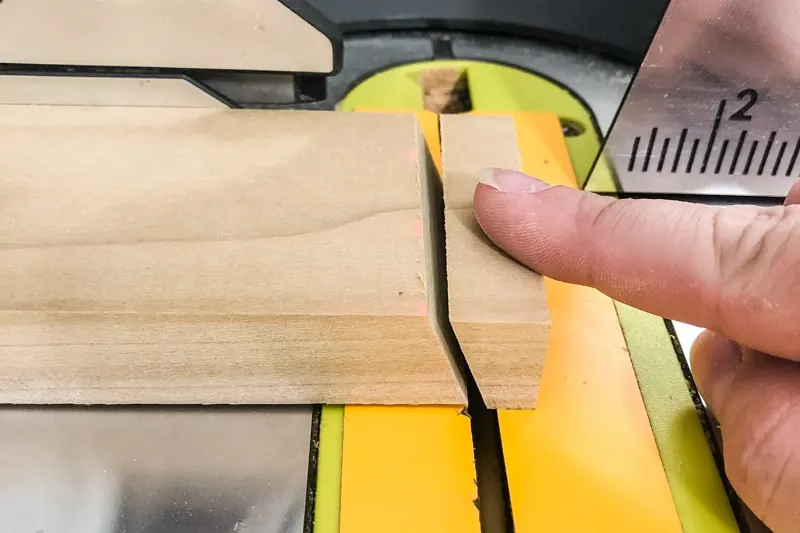
What's the Difference Between a Single Bevel and Double Bevel Miter Saw?
Single bevel miter saws can only tilt in one direction (either left or right). Dual bevel miter saws can tilt in both directions. I go into more detail about this feature and why you would want one type of saw over the other below.
Single Bevel Miter Saw
Let's start with the single bevel miter saw, as it's more common than the double bevel miter saw. You may also see it referred to as a compound miter saw, because it can create both a mitered and beveled cut at the same time.
What is a Single Bevel Miter Saw?
Single bevel miter saws will only tilt in one direction when making bevel cuts. Depending on the saw, the blade will only tilt to the right or left.
It is called a single bevel miter saw because it can only cut a bevel in a single direction. Think of the blade like a clock, with 12:00 as a vertical 90 degree cut. A single bevel miter can only tilt to 10:00 or 2:00, but not both. It will stop at 12:00 if you try to move it to the opposite side.
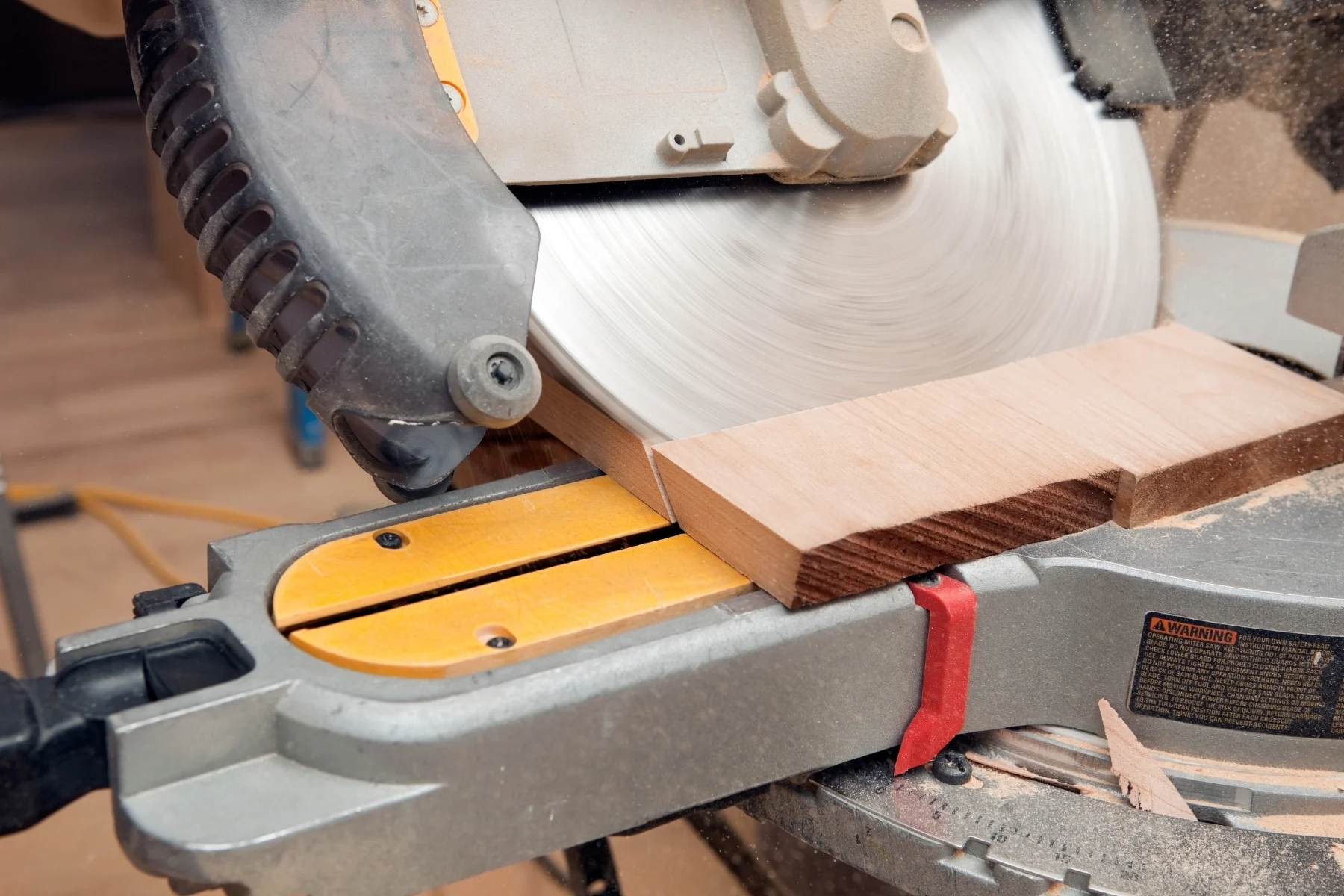
People run into problems with the single bevel miter saw when they need to make a lot of bevel cuts in opposing directions, like when installing crown moulding. With a single bevel saw, you need to flip the board to make the cut in the opposite direction.
When Should I Use a Single Bevel Miter Saw?
You can use single bevel miter saws for most cutting tasks. If you're on a budget and don't want to spend a lot of money on a miter saw, I would recommend a single bevel miter saw.
A single bevel miter saw is also lighter, making this a better choice if you need to lift the saw off a shelf or the floor whenever you plan to use it.
On the other hand, if you find yourself on a larger project that requires frequent bevel cuts, then you may find the single bevel miter tedious.
How to Use a Single Bevel Miter Saw
It's important to know how to use a miter saw. Making a mistake can result in a spoiled project or even serious injuries. To stay safe, and get the perfect cut, follow the guidelines below:
Wear Safety Gear
Always wear ear and eye protection. Get in the habit of putting them on every time you make a cut.
Secure Your Board
You don't want your board moving around, especially if it's standing on edge. Clamp your board into place - this will keep your cut clean and prevent the board from binding the blade. Use a stop block for your miter saw if making multiple cuts of the same length.
Tilt the Blade
Every miter saw is different, so check the manual to see where the lever is located. Most of the time, it can be found somewhere on the motor housing, although mine is on the front arm.
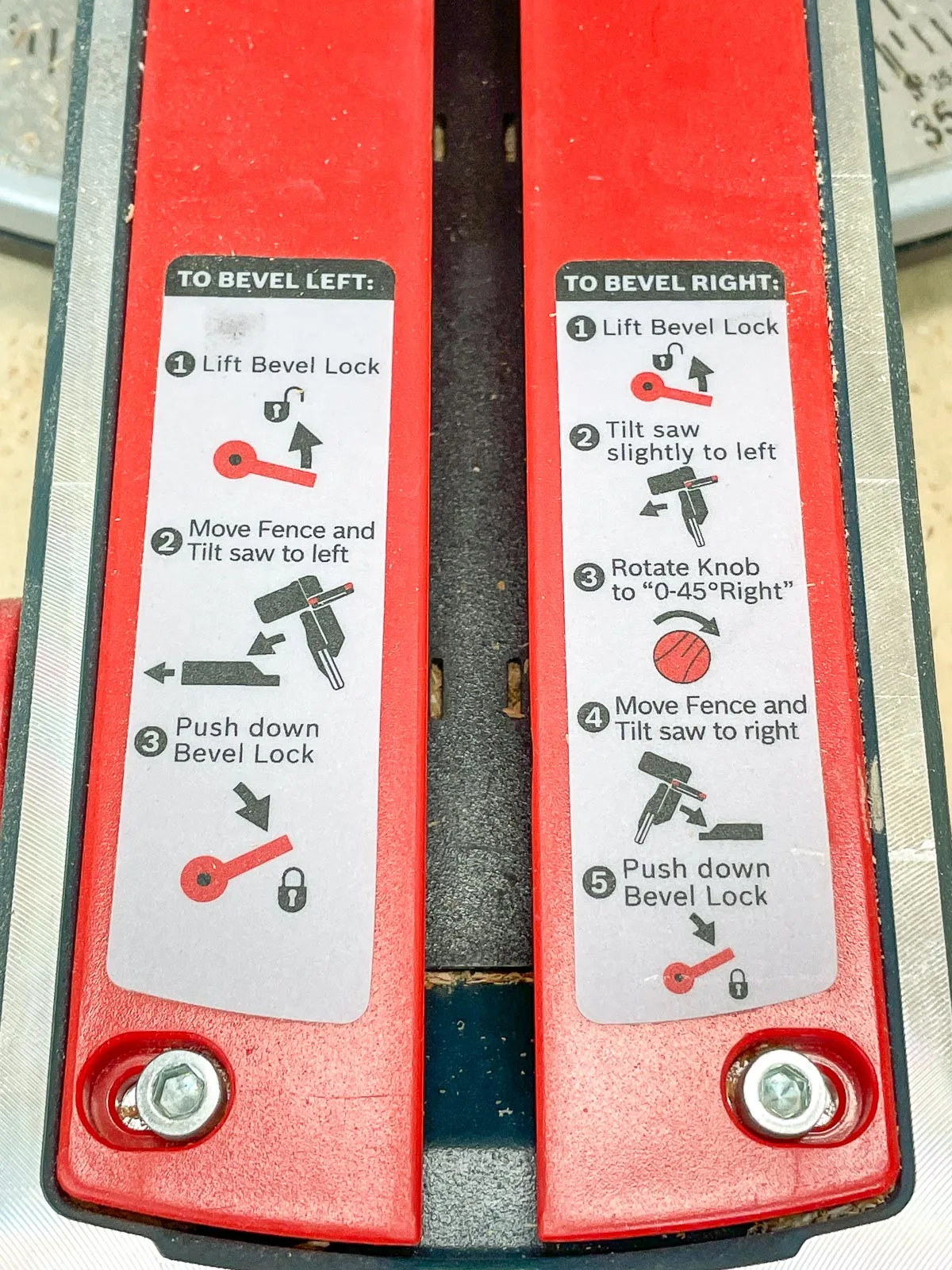
The gauge on the saw will indicate the angle of the blade. It can be difficult to get this angle exactly right based off those tiny lines, so consider buying a magnetic digital angle finder that sticks to the blade to show the exact number.
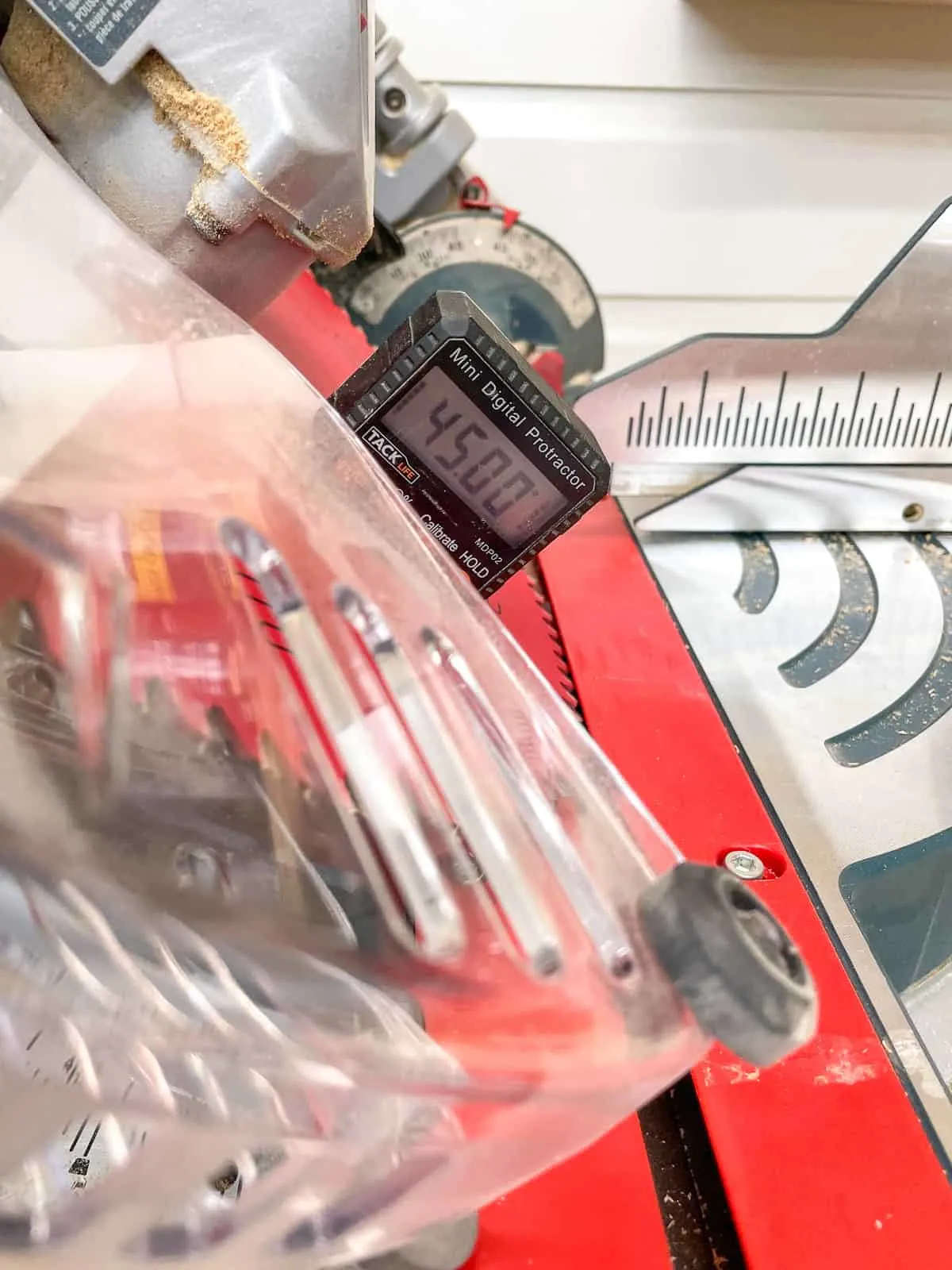
You should always check to make sure the blade will clear the fence when tilted at an angle. Some models require you to widen the opening by sliding the fence to the side before making the cut. That's what this knob on the back of my miter saw fence is for!

Make the Cut
Before you start the saw, pull the blade down to check where the cut will be made. Remember to position the blade on the edge of your marked line, instead of down the center. This will prevent the board from being cut too short.
Once everything is in position, fire up the saw to full speed then bring it down through the wood. Don't bring the blade back up until it stops spinning - this will prevent any small offcuts from spinning away from the blade and hitting you.
Here's a helpful video explaining how to use a single bevel miter saw.
Double Bevel Miter Saw
Alright, time for the double bevel miter saw, also known as a dual bevel miter saw. What makes it so special, and so much more expensive?
What is a Double Bevel Miter Saw?
Double bevel miter saws can tilt to cut a bevel cut both to the right and left of the 90 degree position. You can make a bevel cut and then flip the saw to the other side to make a bevel cut in the opposite direction.
With a double bevel miter saw, you flip the saw. With a single bevel miter saw, you flip the wood.
When dealing with long pieces of wood, it is much easier to flip the saw because you might not have enough room on both sides of the blade. My miter saw station only has a few feet to the right of the blade, but eight feet to the left. With my dual bevel miter saw, I can cut a beveled angle on one end of a long piece of trim in either direction.
When Should I Use a Duel Bevel Miter Saw?
Use a double bevel miter saw when you need to make a lot of bevel cuts in different directions. I bought a dual bevel miter saw for my workshop because I plan to install new baseboards throughout the house, and this will make the job much easier.
While you can use a single bevel miter saw for these tasks, you'll find that using a single bevel miter saw is much more time-consuming. Using a double bevel miter saw allows you to make cuts in a simple, efficient, and logical way.
How to Use a Double Bevel Miter Saw
Now let's discuss the proper way to use a double bevel miter saw. Many of the steps are similar to the single bevel miter saw discussed above, but there are a few extra things to keep in mind.
- Measure twice (or three times) cut once. Especially with bevel cuts on both ends of a single board, you need to take extra time to ensure you're making an accurate cut. You can always trim off a bit more, but you can't add length back on!
- Flip the saw around. For a bevel cut on both ends of a board, reset the miter saw for an opposing bevel cut. A digital angle gauge will help you get the exact angle you need every time you move the saw, so your cuts fit together perfectly!
Is a Double Bevel Miter Saw Worth it?
If you have multiple bevel cuts to make, then a double bevel miter saw is absolutely worth it. Using a single bevel miter saw for a large project will likely lead to mistakes and frustration. But for the average homeowner, I'd say a single bevel miter saw is all you really need!
Personally, I have a double bevel miter saw because I have limited space in my workshop and wanted the option to cut board ends in either direction. But honestly, I haven't used the feature often enough to say it's truly necessary.
Your opinion may vary depending on how frequently you cut bevels for your projects!
Check out these other woodworking tool tutorials!



